How To Manage A Child With Type 1 Diabetes
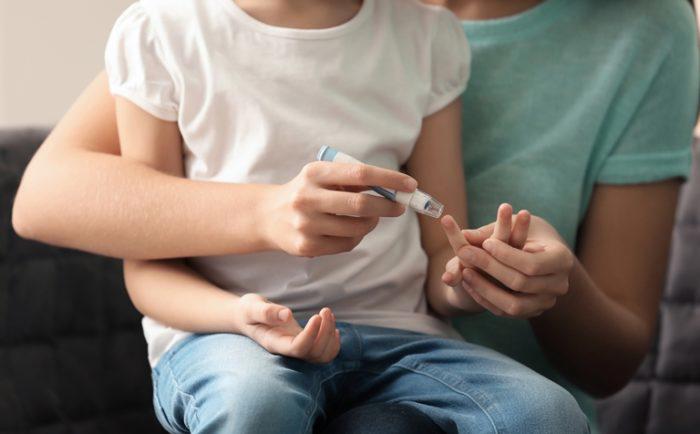
When your child is diagnosed with a health condition it can be a very scary and overwhelming experience. Whether it’s a common illness or a rare disease the stress of the unknown and the ‘what if’ is a common spiral parents find themselves slipping into.
Type 1 diabetes is one of the most common illnesses amongst Australian children impacting 1 in 720 kids between the ages of 0-14 years. Although common, the implications of the illness are in fact life threatening so the onus is on the parent and carers to ensure the child receives appropriate management of the condition to enable them to live an active, vibrant life day to day.
Type 1 Diabetes Explained
Type 1 diabetes is one of the leading illnesses in Australian children. It is generally diagnosed throughout early childhood and is a result of the immune system destroying the cells in the pancreas which produce insulin. Insulin is required to turn glucose (sugar) into energy.
Type 1 diabetes is an auto-immune condition that cannot be cured but it can be managed. Sufferers are required to test their blood glucose levels several times throughout the day and if a reading reveals their levels are below a healthy range they must inject themselves with an insulin shot to stabilise their insulin levels.
If the body does not receive insulin it begins to burn fat and releases negative chemical substances in the blood. If this continues for a period of time and no insulin injection is received then the accumulation of the hazardous chemicals can become life threatening. This is known as ketoacidosis, which is related to hyperglycaemia.
Learn the difference between hyperglycaemia and hypoglycaemia.
What Causes Type 1 Diabetes?
There is no known cause for type 1 diabetes but evidence suggests that if there is a family history of the illness you are at risk.
Type 1 Diabetes in Australia
Type 1 diabetes is one of the most commonly diagnosed conditions in Australian children.
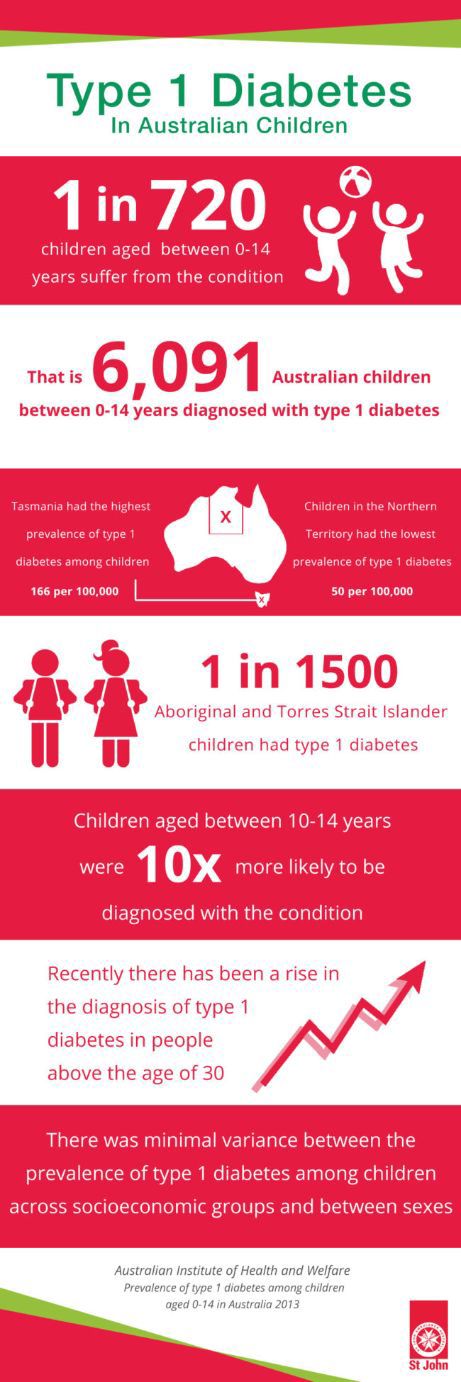
How To Manage Type 1 Diabetes
Because the pancreas is no longer producing the insulin required, the sufferer or guardian must manually monitor and manage insulin levels on an ongoing basis.
Healthy and safe blood glucose levels vary per individual and the time of day. The advised levels may vary upon wake up, before snacks and meals, two hours post meal and at bed time. Talk to your GP about what levels are within the individual safe zone.
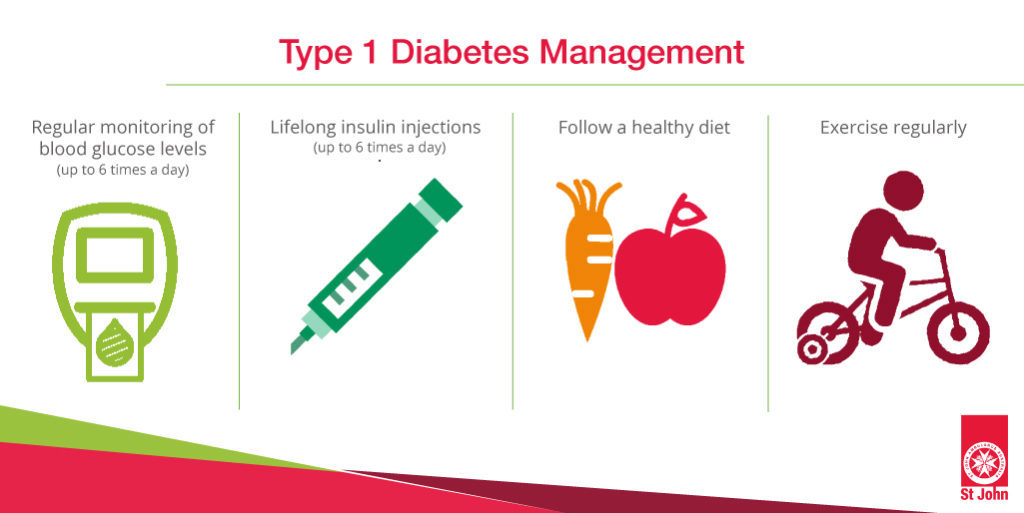
Type 1 Diabetes Signs and Symptoms
If you or your child are displaying the following unexplained symptoms, speak to your GP about being tested for type 1 diabetes.
- Excessive thirst
- Increase in urination
- Tiredness and feeling lethargic
- Constant hunger
- Slow healing of superficial cuts
- Itching, skin infections
- Blurred vision
- Unexplained weight loss
- Moodiness
- Headaches
- Dizziness
- Leg cramps
Know The Difference Between Hypoglycaemia And Hyperglycaemia
A type 1 diabetic might experience hypoglycaemic or hyperglycaemic symptoms when blood glucose levels are not within their healthy range. Hypoglycaemia is when your blood glucose (blood sugar) levels begin to drop. It is the more common and dangerous type of diabetic emergency. Hyperglycaemia is when your blood glucose level starts to climb and is more easily managed.
| Hypoglycaemia | Hyperglycaemia | |
| Signs and symptoms |
|
|
Type 1 Diabetes First Aid
If a type 1 diabetic does not display or recognise symptoms that their blood glucose level is dropping their state will continue to decline, potentially leading them into severe hypoglycaemia. This often includes the inability to eat or drink, seizures or convulsions and unconsciousness.
If a casualty is unconscious:
- Follow DRSABCD
- Call triple zero (000) for medical assistance
If a casualty is conscious and signs suggest low blood sugar (hypoglycaemia):
- Give them sugary drinks or foods in 15 minute intervals until they recover or medical assistance arrives
- Seek medical assistance if required
If casualty is conscious and signs suggest high blood sugar (hyperglycaemia):
- Schedule a visit with your GP to discuss increasing your insulin dose or frequency of insulin shots
- Monitor your blood glucose levels with regular ‘prick tests’ and/or test your urine for ketones each time you urinate
- Increase your intake of water and fluids to account for fluid loss through excessive passing of urine
Seek immediate medical assistance if:
- You are vomiting to the point you cannot hold down food or fluids
- Your blood glucose levels do not drop back to your safe levels as advised by your GP
- Moderate to large ketones are present in your urine (this may be a sign of Ketoacidosis which is a serious type 1 diabetes medical emergency)
Ketoacidosis
Ketoacidosis is a state of extremely high blood glucose levels that has developed over a period of a few hours or days. It is most often experienced by type 1 diabetes sufferers and is a result of a lack of insulin. The signs and symptoms of ketoacidosis include:
- Rapid breathing rate
- Flushed, pink cheeks
- Abdominal pain, soreness
- Scent of acetone on the breath
- Vomiting
- Dehydration, dry mouth, excessive thirst
Note: if you are unsure whether the casualty is suffering from low or high blood sugar, give them a sugary drink. Consuming a sugary drink will not have an immediate negative impact if the casualty is in fact suffering from high blood sugar.
Often, those suffering may refuse your help due to their impaired mental state, particularly with hypoglycaemia. If this is the case, persist as much as you are able by offering them a sugary drink and monitoring the response. Do not give diet type drinks, as these don’t contain the much needed sugar.
What To Do If Your Child Is Diagnosed With Type 1 Diabetes
If your child is diagnosed with type 1 diabetes it’s important the entire family understands the condition, possible implications and what day to day management involves. Management of type 1 diabetes does not need to be difficult, but it may take some getting used to at first. Important things to consider include:
- An educative session on type 1 diabetes for the entire family to participate in when your child is first diagnosed. This can be completed through a diabetes education provider, a family visit to your GP or conducted by yourself with the information you’ve acquired from experts
- Ensure your child understands their condition and knows to inform adults when in new environments
- Plan ahead for when your child is in the care of another. Ensure the child has their blood glucose monitor and insulin injections on hand at all times
- Always let caretakers know the child is type 1 diabetic. Provide them with some key information if they are not professionals
- If your child is too young to self-manage the condition when first diagnosed, spend the time educating them about their healthy blood glucose levels and how to complete the injections to prepare them for self-management in future. This also includes educating them on good food decisions, tracking food consumption and what signs and symptoms to look out for
The initial diagnosis of a child with type 1 diabetes can be daunting and understandably so, the unfamiliar can be unnerving and there is always a chance of serious health implications if not monitored correctly. Thankfully, the condition can be easily managed and something as close to a normal way of life is possible for all involved.
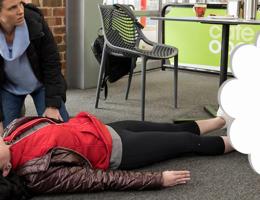
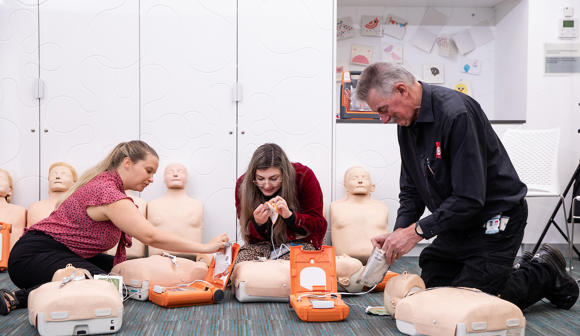
HLTAID011 PROVIDE FIRST AID
Suitable for both people in workplaces and members of the public who would like a comprehensive first aid course.
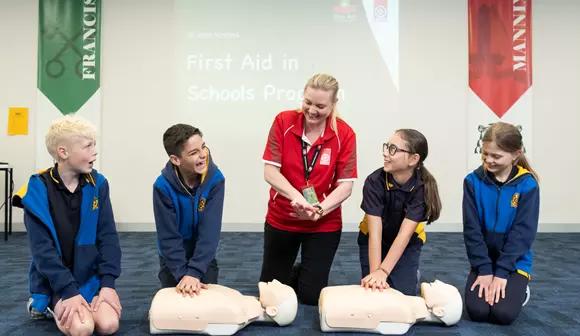
FIRST AID IN SCHOOLS PROGRAM
This free program teaches primary school students the importance of First Aid and what to do in an event of an emergency.
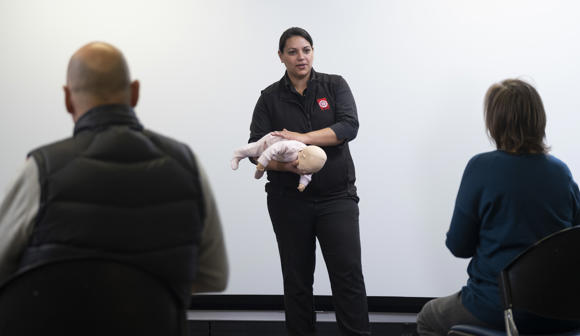
CARING FOR BABIES AND KIDS
Designed for parents and carers. Learn to manage basic first aid situations specific to babies and kids up to 7.
